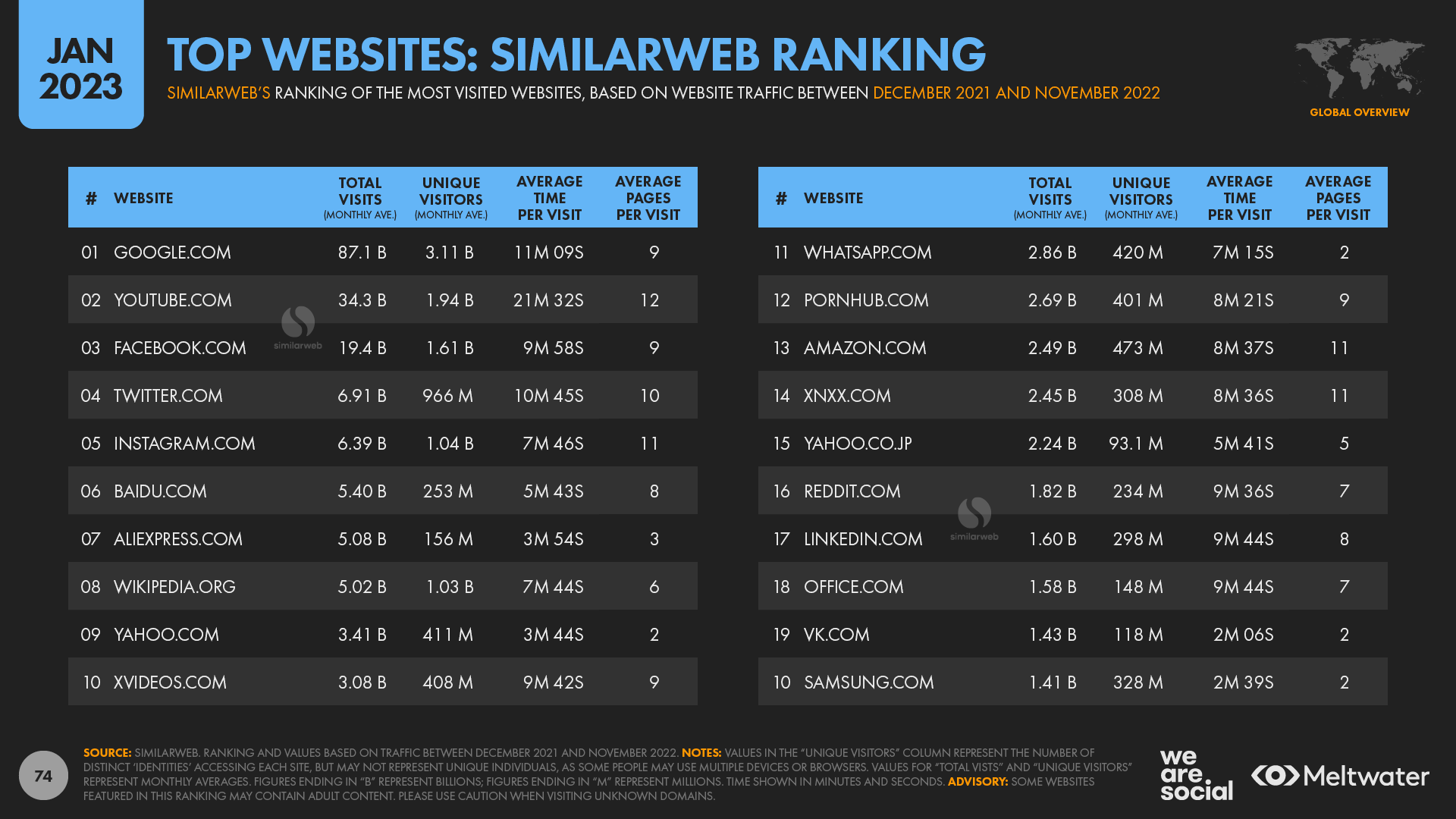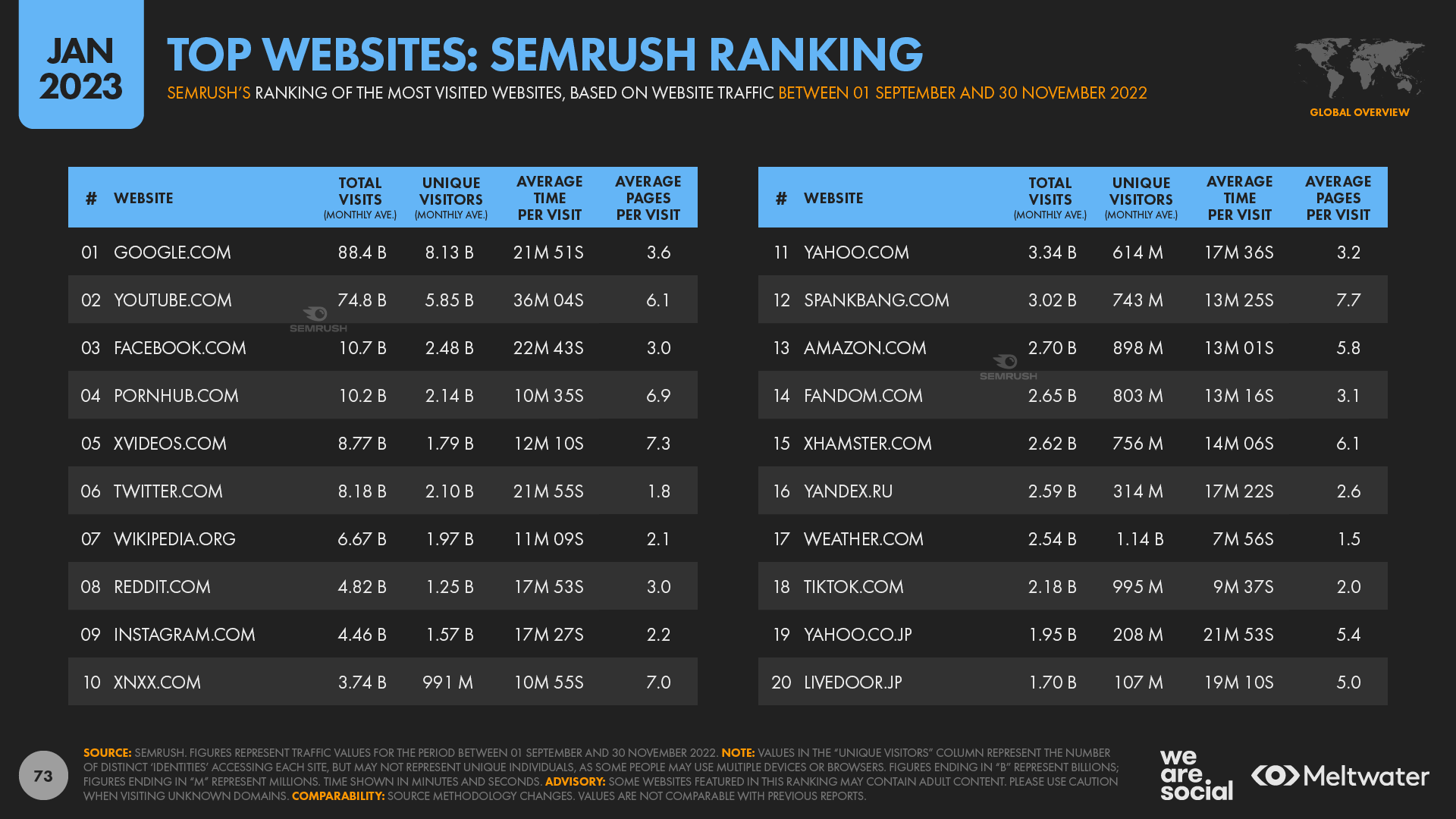Digital 2023 Deep-Dive: Twitter use jumps after Elon Musk's acquisition
Since Elon Musk completed his acquisition of Twitter and took the company private on 27 October 2022, there has been widespread speculation as to the platform’s potential fate.
Many observers have focused on a purported exodus of advertisers, while other pundits have forecast that users will abandon the platform en masse in 2023.
However, the latest data tell a very different story, and whatever your views on Musk’s moves and motives, it seems he’s been doing at least a few things right.
Let’s explore what the data tells us.
Ads on Twitter reach more than half a billion users
The latest figures published in Twitter’s own planning tools indicate that ads on the platform now reach in excess of 550 million users per month.
That’s 120 million more than the figures that the same tools reported this time last year, which would suggest that Twitter’s ad audience has jumped by more than a quarter over the past twelve months.
However, perhaps the most important finding in the latest data relates to Twitter’s most recent quarterly growth.
The company’s ad reach data suggest that Twitter’s global reach has increased by more than 2 percent since Musk took over in October, equating to an additional 12 million users in just the last three months.
So, no signs of any exodus yet.
The sceptics will doubtless claim that bots account for the vast majority of Twitter’s recent increases, but our detailed analysis of various third-party datasets supports Twitter’s own data.
For example, data.ai’s analysis reveals that people spent an additional 21 minutes per month using Twitter’s Android app in 2022, as compared with the 2021 average.
That equates to an annual increase of 6.7 percent in the time spent, and means that Twitter’s mobile app users now spend an average of 5½ hours using the app every month.
But what about Twitter use at a country level?
Twitter use by country
Returning to the ad reach data, Twitter’s own numbers suggest that the United States is still home to the greatest number of Twitter users, at just over 95 million.
And the good news is that Twitter’s ad reach in the US continues to grow, with the latest numbers up by 4 percent (3.7 million) since October 2022, and by 24 percent (18.5 million) since this time last year.
The platform has seen also seen solid increases in Japan – its second largest market – where ad reach has increased by more than 14 percent (8.5 million) over the past year.
Meanwhile, since the start of 2022, Twitter’s ad reach has increased by 15.5 percent in India, and by an impressive 30 percent in Indonesia. It’s also up by more than a quarter (+27.6 percent) in Brazil.
So… still no signs of that user exodus.
Twitter is a key source of social media referrals
Meanwhile, another fascinating insight in this year’s data is that Twitter now ranks second at a worldwide level when it comes to the share of websites referrals originating from social media.
Data from Statcounter reveals that Twitter drives more than 10 percent of the world’s social media referral traffic, behind Facebook’s 67 percent.
More interestingly, however, Twitter’s share of social media referrals has jumped by more than a third over the past twelve months, with Statcounter’s data showing a 34 percent year-on-year increase.
So, any advertisers that are considering abandoning the platform may want to take a closer look at these figures by country first, to understand Twitter’s potential role in delivering valuable marketing outcomes.
One of the world’s top websites
But even more importantly, the latest web traffic data suggest that Twitter may be even more “popular” – and potentially even more valuable – than the company’s ad metrics suggest.
Indeed, both Semrush and Similarweb report that Twitter.com is one of the top 6 most visited domains on the internet.
Similarweb’s analysis even puts Twitter in fourth place at a worldwide level, based on total website visits – that’s ahead of Instagram, ahead of Wikipedia, and ahead of all the world’s most popular “adult” sites.
Indeed, only Google.com, YouTube.com, and Facebook.com see more overall traffic in Simialrweb’s ranking.
It’s worth noting that Semrush and Similarweb analyse web traffic in slightly different ways, and the data in these two tables also relates to different time periods (as detailed on the charts themselves), so they’re not directly comparable.
However, closer examination of the data and underlying trends suggest that Twitter’s website may well be attracting more than 1 billion unique “visitors” each month.
It’s important to stress that these figures don’t represent unique individuals though, because – in this context – “visitors” is more akin to “devices”.
Indeed, given that YouTube’s 5.85 billion figure in Semrush’s ranking actually exceeds the total number of global internet users (5.16 billion), there’s inevitably some duplication in there.
But that duplication is to be expected, especially with the latest data from GWI indicating that the typical global internet user now goes online using an average of 2.7 different devices.
Even if we allow for this average number of devices though, Semrush’s data still suggests that Twitter’s website may attract in excess of 750 million unique individuals per month.
That’s more than three times higher than the “monetisable daily active users” (mDAU) figure that Twitter published in its most recent Q2 2022 investor earnings report.
It’s also roughly 50 percent higher than the global ad reach figure that we saw above.
And the key thing to remember here is that web traffic figures include visitors who haven’t created an account or logged in to the respective service.
From what we understand, the mDAU figures that Twitter previously published in its investor earnings reports only included active, logged-in users.
However, it’s been clear for some time now – and from various different data points – that a significant share of people who consume Twitter content never actually qualified for that mDAU metric.
In other words, Twitter’s previously reported metrics significantly under-represented true usage of the platform.
And the key takeaway here is that marketers may want to look beyond ads, and explore how they can make better use of Twitter’s broader “propositions” as well.
Meanwhile, Elon and team may also have plans to change the role that ads play in Twitter’s future, with a recent tweet declaring that he thinks “ads are too frequent on Twitter and too big”, and that he and the team are “taking steps to address both in coming weeks”.
Looking ahead
Perhaps more than any of the other platforms that we track in our Global Digital Reports, Twitter’s figures seem the most susceptible to fluctuation, even over short periods of time.
This may partly reflect its own self-declared status as a “news” site though, with platform use particularly dependent on the vagaries of the global news cycle.
However, that very status may hold the key to making better marketing use of Twitter.
For example, rather than “lumping it in” together with platforms like Facebook, Instagram, and TikTok, marketers might do better to consider Twitter in the same way that they’d treat conventional news sites, especially in terms of the marketing content that they deploy to the platform.
Either way though, all these latest numbers suggest that Twitter may still hold plenty of promise for marketers.
As a result, we’ll be keeping a close watch on the evolution of Twitter’s ad reach numbers in our upcoming quarterly Statshot reports throughout 2023, and you can also dig into the latest reported numbers by country in our dedicated Twitter ad reach reports.
Click here to see all of Simon’s articles, read his bio, and connect with him on social media.


